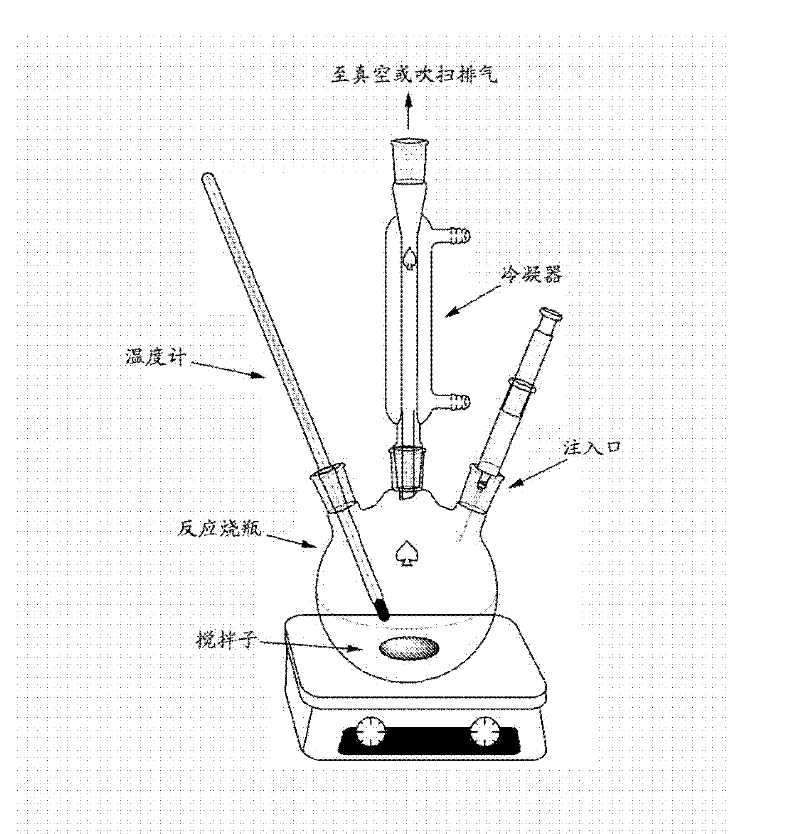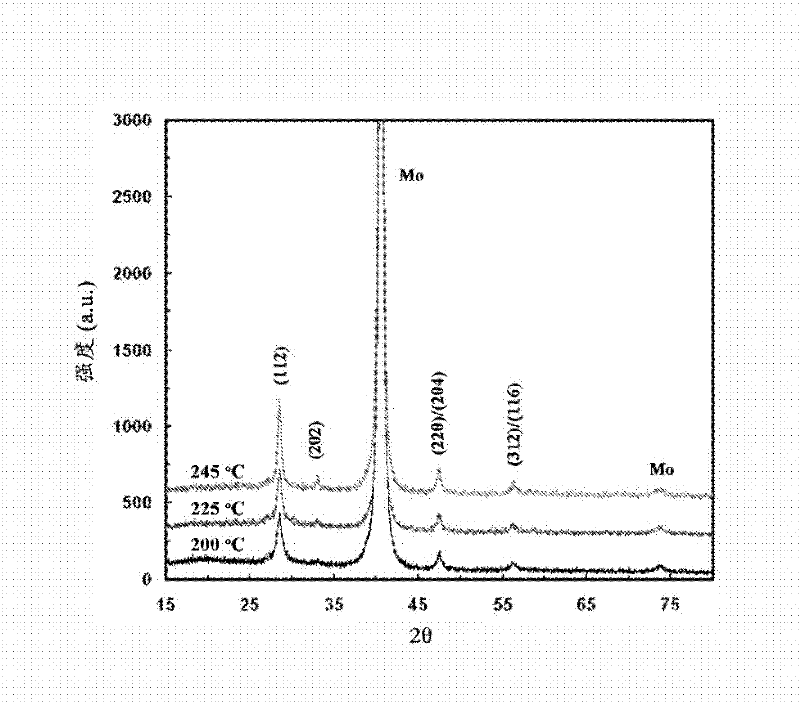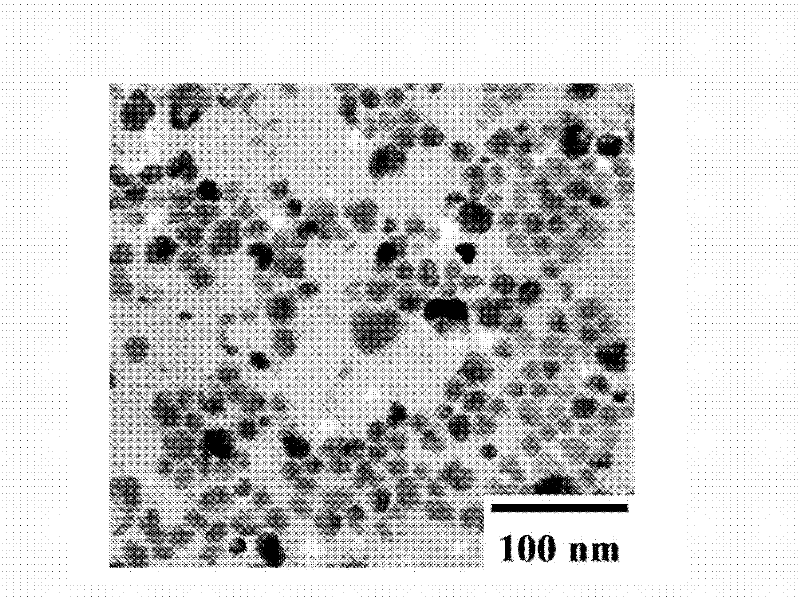Synthesis of multinary chalcogenide nanoparticles comprising cu, zn, sn, s, and se
A nanoparticle and particle technology, applied in the field of multi-component chalcogenide CZTSSe nanoparticles4, can solve the problems of slow progress of solar cells
- Summary
- Abstract
- Description
- Claims
- Application Information
AI Technical Summary
Problems solved by technology
Method used
Image
Examples
Embodiment 1-C
[0091] The synthesis of embodiment 1-CZTS nanoparticles
[0092] In the synthesis of exemplary CZTS nanoparticles, copper(II) acetylacetonate (1.5mmol; 99.99%, Aldrich), zinc acetylacetonate (0.75mmol, 99.995%, Aldrich), and bis(acetylacetonate) A mixture of tin(IV) bromide (0.75 mmol; 98%, Aldrich) and 10 ml oleylamine (technical grade, Aldrich) was added to a 100 ml three-necked flask connected to Schreck technology. The mixture was heated to about 130 °C under vacuum, degassed for 30 min, and sparged with Ar several times. After raising the temperature to 200°C-245°C, 3ml of a 1M sulfur solution (in oleylamine) was injected through the third neck. After injection, the reaction was allowed to mix for 30 minutes to completion. The heating mantle was then removed and the mixture was cooled to about 80°C. The resulting nanocrystals were collected by centrifugation in a 3:1 mixture of isopropanol and toluene. The precipitate was then redispersed in about 40 ml of toluene to ...
Embodiment 2
[0095] Example 2 - Synthesis of Cu-deficient, Zn-enriched CZTS nanoparticles
[0096] By varying the relative amounts of metal precursors used in the synthesis, the ratio of Cu:Zn:Sn in the CZTS nanoparticles can be varied. In one embodiment, copper(II) acetylacetonate (0.75 mmol; 99.99%, Aldrich), zinc acetylacetonate (0.75 mmol; 99.995%, Aldrich), and bis(acetylacetonate)tin dibromide 10 ml of oleylamine (technical grade, Aldrich) of the mixture of (IV) (0.5 mmol; 98%, Aldrich) was added to a 100 ml three-neck flask connected to Schleck technology. The mixture was heated to about 130 °C under vacuum, degassed for 30 min, and sparged with Ar several times. After raising the temperature to about 235°C, 2 ml of a 1M sulfur solution (in oleylamine) was injected through the third neck. After injection, the reaction was allowed to mix for 30 minutes to completion. The heating mantle was then removed and the mixture was cooled to about 80°C. The resulting nanocrystals were coll...
Embodiment 3
[0097] Example 3 - Synthesis of CZTS nanoparticles using non-coordinating solvents
[0098] By using the required amount of coordinating ligands (such as amines, carboxylic acids, ethers, phosphines, phosphonic acids, and thiols), the synthesis of CZTS nanoparticles can use non-coordinating solvents (such as and alkenes). For example, a non-coordinating solvent such as octadecene can be used with oleic acid as a coordinating ligand.
[0099] More specifically, 10 ml of octadecene (technical grade, Aldrich) was mixed with 1.58 ml of oleic acid (technical grade, Aldrich) to form a solution of reconstituted solvent, to which copper (II) acetylacetonate (1 mmol; 99.99%, Aldrich), zinc acetylacetonate (0.5 mmol; 99.995%, Aldrich), and bis(acetylacetonate)tin(IV) dibromide (0.5 mmol; 98%, Aldrich). The resulting precursor solution was added to a 100 ml three-necked flask connected to Schleck technology. The reaction product was heated to about 130°C under vacuum, degassed for 30 ...
PUM
| Property | Measurement | Unit |
|---|---|---|
| thickness | aaaaa | aaaaa |
| thickness | aaaaa | aaaaa |
| thickness | aaaaa | aaaaa |
Abstract
Description
Claims
Application Information
 Login to View More
Login to View More - R&D
- Intellectual Property
- Life Sciences
- Materials
- Tech Scout
- Unparalleled Data Quality
- Higher Quality Content
- 60% Fewer Hallucinations
Browse by: Latest US Patents, China's latest patents, Technical Efficacy Thesaurus, Application Domain, Technology Topic, Popular Technical Reports.
© 2025 PatSnap. All rights reserved.Legal|Privacy policy|Modern Slavery Act Transparency Statement|Sitemap|About US| Contact US: help@patsnap.com



